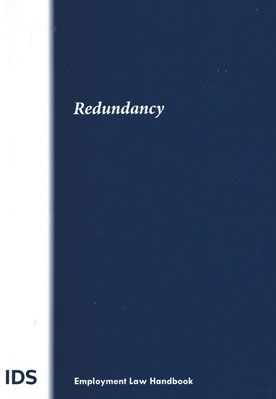We will be closed from 5pm Thursday 17th April for the Easter Bank Holidays, re-opening at 8.30am on Tuesday 22nd April. Any orders placed during this period will be processed when we re-open.

The right of employees to receive a statutory payment when dismissed for redundancy was introduced over 50 years ago, making it one of the oldest employment law rights on the statute book.
The definition of 'redundancy' for this purpose has undergone little change in that time. However, the subsequent introduction of other rights and protections, including the right not to be unfairly dismissed, protection from discrimination on various grounds, and the right to information and consultation on collective redundancies, means that the handling of redundancy situations has become increasingly complex.
This IDS Employment Law Handbook aims to provide a clear and comprehensive account of the law on redundancy. It explains the relevant legislation and examines the pertinent case law, considering both reported and unreported decisions, not only of the higher courts but also of employment tribunals.
The Handbook offers a comprehensive explanation of the issues that can arise in both individual and collective redundancy situations. Among the subjects covered in detail are the meanings of 'dismissal' and 'redundancy'; the effect of offers of alternative work; the implications of lay-off and short-time working; and the calculation of statutory redundancy pay.
The implications of unfair dismissal and discrimination law are analysed in depth, with detailed consideration of how unfairness and/or discrimination may arise in the redundancy selection and consultation process. There is also a thorough explanation of the duties imposed on employers to inform and consult employee representatives when multiple redundancies are proposed.
Concise and informative, the Handbook is an authoritative guide to this complex and ever-relevant topic.